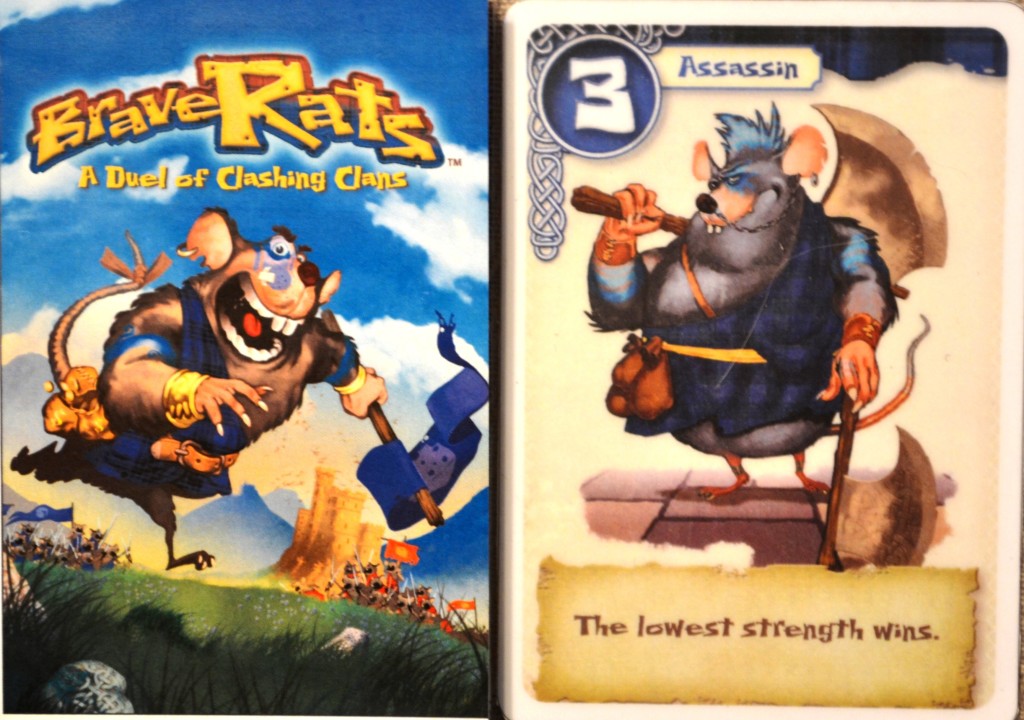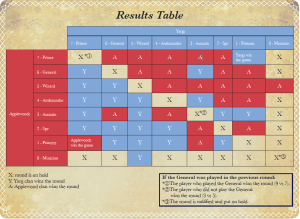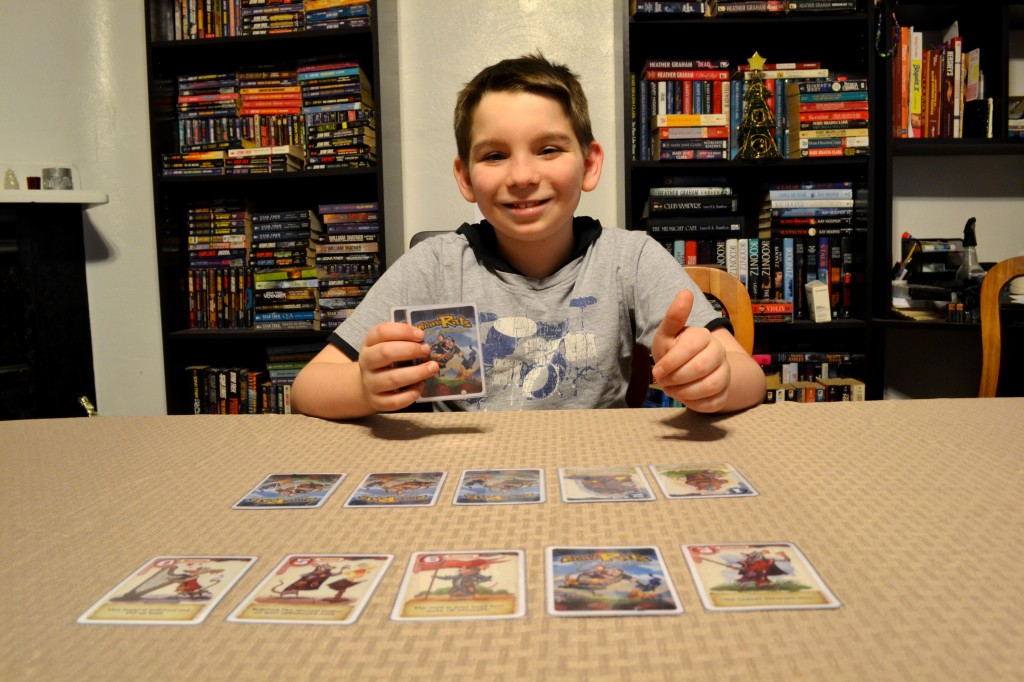The 13th century was an interesting time for humanity. The Magna Carta was signed, Parliament went mad, and rat clans rivaled for a shot at the throne. What do you mean that last bit didn’t happen? Like you were there! *Sigh*, okay okay…you got me. Here I was, trying to impress you with a clever lead-in to the latest project by Blue Orange Games titled “BraveRats”…not to be confused with “Braveheart”, mind you. While it’s possible that the rats in this game may have worn kilts, it’s best not to think about such things. In “BraveRats”, one player will take on the role of the Yarg while the other assumes the role of the Applewood…two opposing rat clans that want all the power of the throne for themselves. Before we take a look at this game in further detail, I’d like to thank Annika Harper from Blue Orange Games for providing me with a press copy. It’s important to note that the copy I received is a prototype and as such, the below content is subject to change.
My press copy came with eight blue cards, eight red cards, and a very short (but concise) instruction manual. As you may have already guessed, one player will take a set of the blue cards (Yarg) while other takes the red cards (Applewood). Their goal will be to claim the throne (the former King went missing for reasons unknown) and rule the kingdom. To do that, they’ll need to win a series of battles and the first player to win four rounds, wins the game.
The eight cards at a player’s disposal each represent a particular character in their respective clans. Each clan has a Prince, General, Wizard, Ambassador, Assassin, Spy, Princess, and Musician. Each card has some sort of special ability or rule set to follow whenever they are played and react differently to the other characters. Not to worry, the instruction manual does an excellent job in providing the player with the information they need to determine which characters trump who. The results table (with “X” being Yargs and “Y” being Applewoods), for example, clearly shows who the victor would be depending on the circumstances.
The game itself is broken up into rounds. At the beginning of a round, each player will choose a card from their hand and place it face down in front of them. Once this is done, both players flip these cards face up and are compared appropriately. Each character has a rank that in most cases determines the victor, though as I mentioned earlier, special abilities can trump another card regardless of rank. Again, the results table in the manual will guide you in the appropriate direction if the card text confuses you in any way.
The winner of a round will keep their card turned face up while the loser turns their card face down. This doesn’t have any bearing on future rounds, it only serves to keep track of how many rounds a particular player has won. If players happen to draw the same card, the round ends with said cards being placed “on hold”. The winner of the following round will determine who wins the tie. This will continue until one player has managed to win four rounds…though there are some other victory conditions that are card specific.
Speaking of which, the cards are pretty varied in terms of their individual power. While a particular deck may only have eight cards, there’s quite a bit to consider. The Princess, for example, is of fairly low rank, but automatically wins the game for the player if played against the enemy Prince. The musician automatically placed the current round on hold, which is great if you suspect your opponent is about to play a high-ranked card. A victory with the Ambassador awards the player with two won rounds instead of just one. The Wizard nullifies special powers, leaving the cards’ rank to determine who stands victorious. These are just a few examples, but you get the idea.
I was very surprised to see a total of seven different variations listed in the manual, most of which can be summed up in less time than it takes to say “BraveRats”. One variant involves players exchanging a card at the beginning of the game (“Traitor”), while another randomly deals the sixteen cards (red and blue) equally among the players (“Random Deal”). The “Lucky Draw” variant is an interesting one, as each player will only have a hand of three cards while the rest remain in a draw deck. You won’t have all of your characters right from the get go, making it harder to tell which character your opponent might choose. “Draft” is a variation of “Random Deal”, though players get to choose through a draft selection which cards to keep.
Based on their catalog, Blue Orange Games has a reputation for making games that the whole family can play. “BraveRats”, I’m pleased to report, turned out to be no different in that regard. Kids will enjoy the card art and characters, while the adults will appreciate the special abilities and the “Poker-face” requirement that comes with serious play. There’s also a bit of card counting too…that is, you’ll be able to better guess what your opponent plays as the game progresses. This is assuming of course that you’re paying attention. “BraveRats” won’t win any awards for longevity and depth, but I found that it doesn’t have to. If you’ve got five minutes to spare and you need to satisfy that gaming itch, then look no further than “BraveRats”.
Editor’s Note: The game is scheduled to be released in February, 2014.
—
You can learn more about Blue Orange Games and purchase the game (once it becomes available) by visiting the official site, here:
http://www.blueorangegames.com/
—



